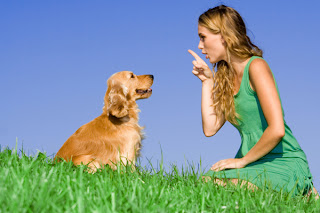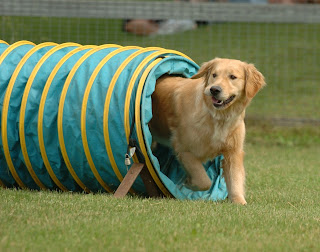Dog training should originally be started from the puppy phase, but as some of the dogs were left untrained until adults people start to find out how to train an adult dog than sticking to the old ways of training dogs from puppy phase, especially if what were training is related to the dog's agility. But here you will find out that even adult dogs are the same as puppy.
Being "old" greatly varies from dog to dog, from the extent of a dog's experience to the innate and natural tendencies it's. In short, there is no specific age at which the dog ought to be restrained from training.
However it is always far simpler to start training with much more youthful canines since their learned behaviors are still not rooted in to their habits.
For choosing elderly canines for training, the handler ought to not generate the impression that the dog would no longer learn so there is no need to waste time. The attitude of the dog as much as that of the trainer is both highly essential to faster learning. The more dedicated and patient the owner is the faster the dog learns.
There's several approaches to beginning training for agility. A quantity of which are discussed here briefly:
Physical exercise
The introduction to agility training ought to start with physical exercises. If the handler has interest to dedicate on training the dog, the age will no longer matter for it is the condition that will rule over. Simple exercises like leaping or hopping may agitate the dog and encourage him to move a tiny bit. For puppies, these exercises are much simpler to do since they have energy to make use of.
Let him play around
Like teaching tiny children, the simplest approach to agility training for more youthful puppies is to turn the exercises in to a series of games. The gigantic majority of puppies can passing through tunnels and chutes so take advantage of this chance and introduce the tunnels, obstacles and the training area itself as gigantic play ground.
This approach will generate positive impressions on him which will also prepare him for future training.
Promote his agility
In the event you don't have a sufficient area for setting up hindrance courses, it is best to make use of positive games that also encourage agility. Simple equipment like improvised tunnels or walls could be made to increase training.
Keep it short
Canines don't experience passion when it comes to activities but they have the innate desire to their owners. This means that they don't get devoted unless they are rewarded for lovely actions they have made and that you show your favor for their actions. Their attention span is also limited so they could not continue training for extended hours.
In the event you need to start training your dog for agility, establish the rule that you ought to keep each training session and each lesson as short as feasible. You don't must finish everything in sitting. You ought to divide each exercise in to sections that the dog could basically understand. Also seldom finish with a negative note. Always be positive that the dog finishes each exercise with praise.
Training your dog for agility does not lie on how elderly or young he is, it lies in the foundation of responsiveness, independence, drive to work alone and to follow the command and your desire to work with him with patience and knowledge of his capacities, just keep on doing your dog training activity and you'll definitely figure that out on your own ^_^
Promote his agility
In the event you don't have a sufficient area for setting up hindrance courses, it is best to make use of positive games that also encourage agility. Simple equipment like improvised tunnels or walls could be made to increase training.
Keep it short
Canines don't experience passion when it comes to activities but they have the innate desire to their owners. This means that they don't get devoted unless they are rewarded for lovely actions they have made and that you show your favor for their actions. Their attention span is also limited so they could not continue training for extended hours.
In the event you need to start training your dog for agility, establish the rule that you ought to keep each training session and each lesson as short as feasible. You don't must finish everything in sitting. You ought to divide each exercise in to sections that the dog could basically understand. Also seldom finish with a negative note. Always be positive that the dog finishes each exercise with praise.
Training your dog for agility does not lie on how elderly or young he is, it lies in the foundation of responsiveness, independence, drive to work alone and to follow the command and your desire to work with him with patience and knowledge of his capacities, just keep on doing your dog training activity and you'll definitely figure that out on your own ^_^



No comments:
Post a Comment